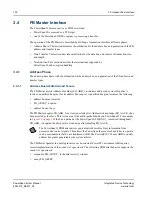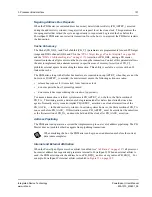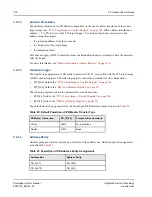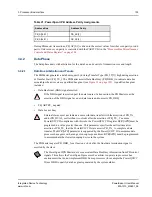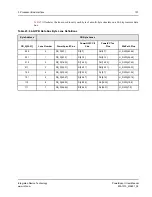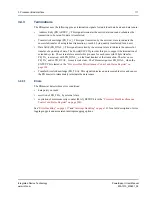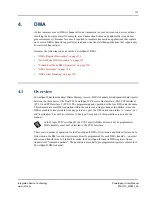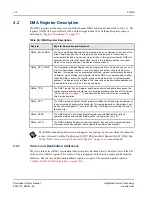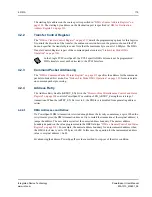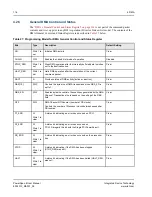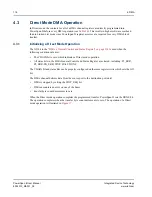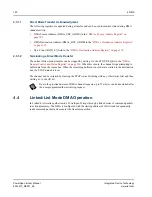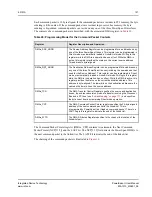
113
PowerSpan II User Manual
80A1010_MA001_09
Integrated Device Technology
www.idt.com
4. DMA
A direct memory access (DMA) channel allows a transaction to occur between two devices without
involving the host processor (for example, a read transaction between a peripheral device and host
processor memory). Because less time is required to complete transactions, applications that contain
one or more DMA channels support faster read and write transfers than applications that support only
host-assisted transactions.
discusses the following topics about the PowerSpan II DMA:
•
“DMA Register Description” on page 114
•
“Direct Mode DMA Operation” on page 118
•
“Linked-List Mode DMA Operation” on page 120
•
•
“DMA Error Handling” on page 124
4.1
Overview
PowerSpan II has four identical Direct Memory Access (DMA) channels for independent data transfer
between the three ports of the Dual PCI PowerSpan II: Processor Bus Interface (PB), PCI Interface 1
(PCI-1) and PCI Interface 2 (PCI-2). The programming and operation of the four DMAs are the same.
This chapter discusses DMA operation within the context of a single channel. In addition, since the
DMAs are able to transfer data from any port to any port, the DMA discussion refers to “source” bus
and “destination” bus with no reference to bus type. Exceptions to this guideline are noted in the
manual.
There are two modes of operation for the PowerSpan II DMA: Direct mode and Linked-List mode. In
Direct mode, the DMA control registers are directly programmed for each DMA transfer
—
one start
address and transfer size. In Linked-List mode, the PowerSpan II loads its DMA registers from a
linked-list of “command packets”. The packets are essentially pre-programmed register contents for a
PowerSpan II DMA channel.
In the Single PCI PowerSpan II, the PCI-2 specific DMA bits must not be programmed.
DMA transfers must not be directed to the PCI-2 Interface.


